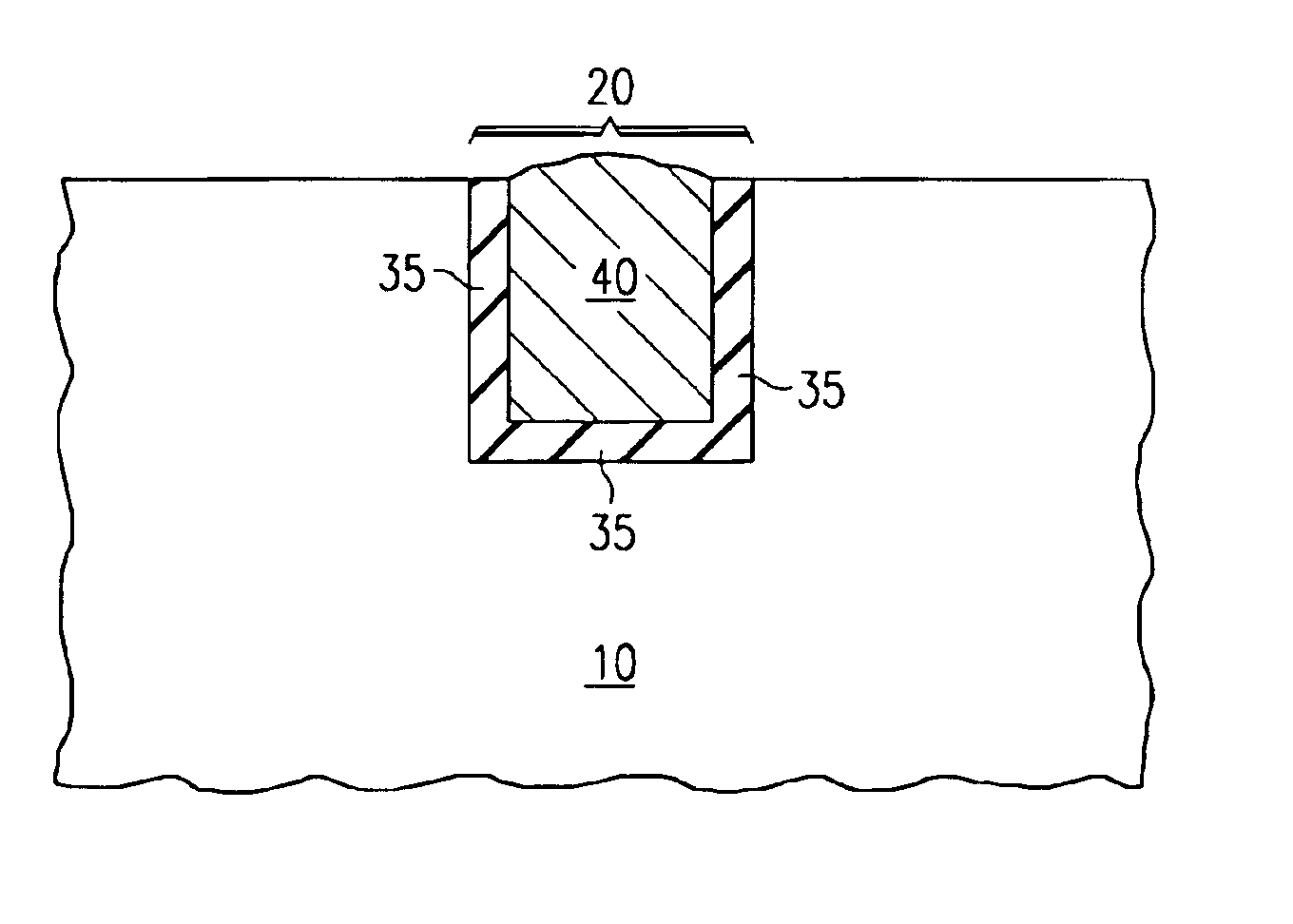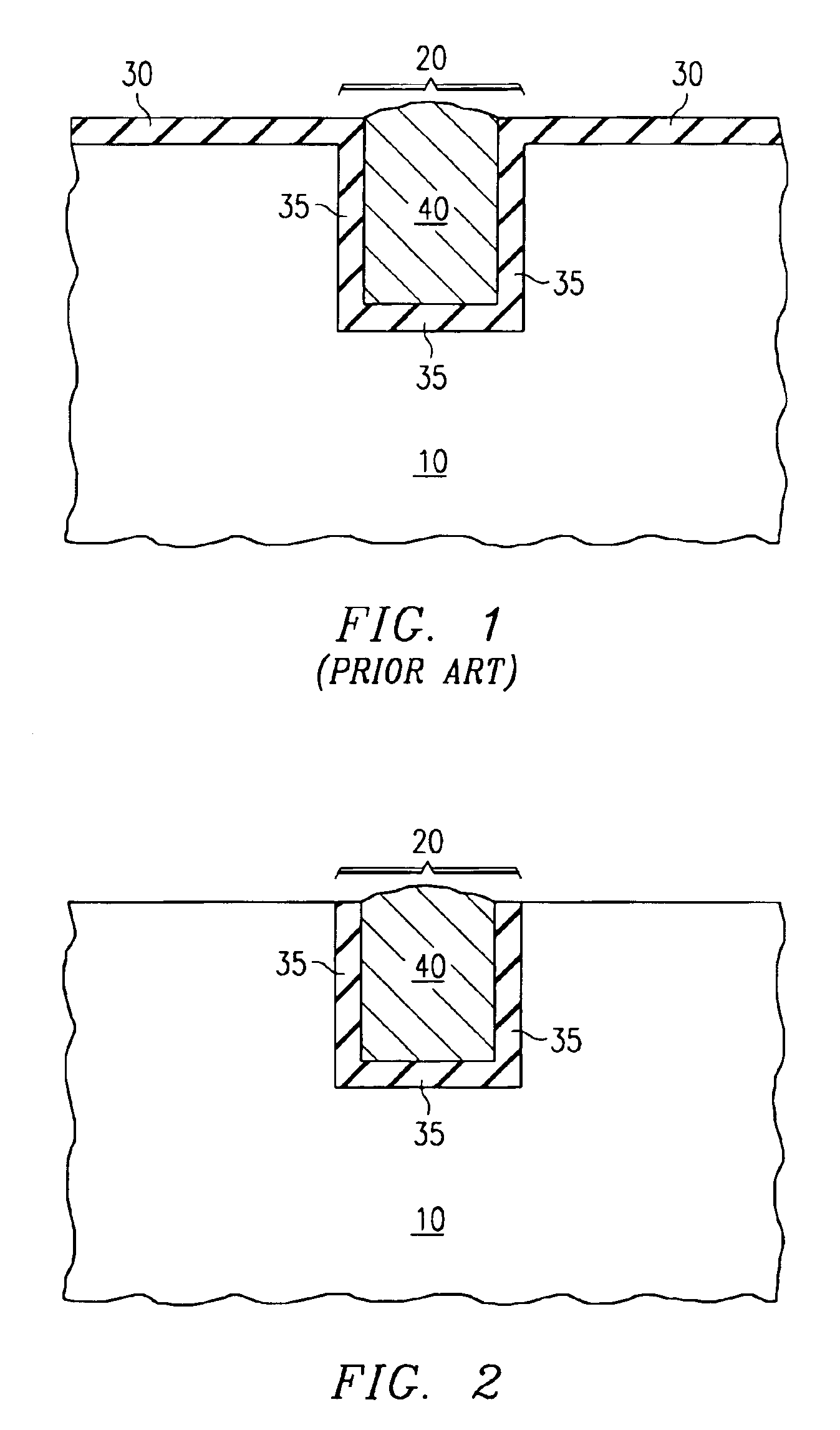Selective dry etching of tantalum and tantalum nitride
a dry etching and tantalum technology, applied in the field of dry etching process, can solve the problems of rc time delay, selective removal of tasub>x/sub>n/sub>layer, and difficult process of selective removal of tasub>y/sub>layer, and achieve the effect of reducing the rc time delay
- Summary
- Abstract
- Description
- Claims
- Application Information
AI Technical Summary
Benefits of technology
Problems solved by technology
Method used
Image
Examples
Embodiment Construction
[0008]A two step dry etch process is used to selectively etch TaxNy and / or Tantalum (Ta). The subscripts x and y in the chemical symbol for tantalum nitride (i.e. TaxNy) represent integer numbers that depend on the form of the tantalum nitride alloy. The etch process of the instant invention will selectively etch all forms of tantalum nitride alloys and well as tantalum metal. The process conditions are described in the following table:
[0009]
ReducingOxidizingIndicesUnitsStep 1Step 2WaferCelsius>60TemperaturePressuremilliTorr500-900500-900N2Sccm 250-10000NH3Sccm1000-40000O2Sccm01000-5000H2Sccm00C2F4Sccm0 20-100PowerWatts 700-1200 800-1800
[0010]As shown in above table, the first step of the process comprises a plasma process with nitrogen (N2) and ammonium (NH3) as the active gases. In addition to N2 and NH3 other gases, including carrier gases such as argon, can be present in the chamber without departing from the instant invention. In an embodiment of the instant invention the flow ...
PUM
| Property | Measurement | Unit |
|---|---|---|
| Angle | aaaaa | aaaaa |
| Angle | aaaaa | aaaaa |
| Plasma power | aaaaa | aaaaa |
Abstract
Description
Claims
Application Information
 Login to View More
Login to View More - R&D
- Intellectual Property
- Life Sciences
- Materials
- Tech Scout
- Unparalleled Data Quality
- Higher Quality Content
- 60% Fewer Hallucinations
Browse by: Latest US Patents, China's latest patents, Technical Efficacy Thesaurus, Application Domain, Technology Topic, Popular Technical Reports.
© 2025 PatSnap. All rights reserved.Legal|Privacy policy|Modern Slavery Act Transparency Statement|Sitemap|About US| Contact US: help@patsnap.com


